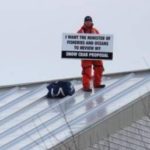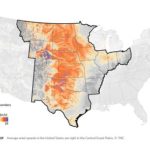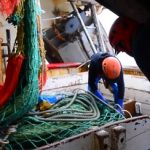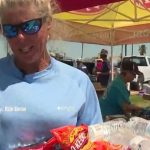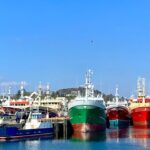Daily Archives: June 30, 2017
UPDATE – F/V Miss Destinee – Coast Guard, partners continue search for two missing in Marmot Bay, Alaska
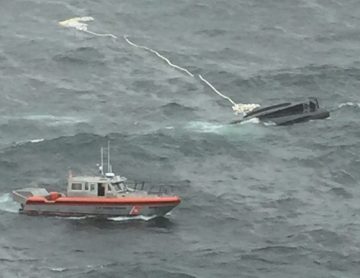 Coast Guard, Alaska Air National Guard and good Samaritans continue to search Friday for one male and one female reported missing from the fishing vessel Miss Destinee that capsized in Marmot Bay. Coast Guard Air Station Kodiak MH-65 Dolphin and MH-60 Jayhawk helicopter crews, a Coast Guard Aids to Navigation Team Kodiak boat crew, the crews of the Coast Guard Cutters Sherman and Chandeleur, nine para-rescuemen from the AK ANG 212th Rescue Squadron and the crew of tug St. Michael searched throughout Thursday night near the location of the Miss Destinee, 23 miles north of Air Station Kodiak.,, A good Samaritan crew rescued two survivors Thursday from the water near the Miss Destinee. click here to read the update 18:32
Coast Guard, Alaska Air National Guard and good Samaritans continue to search Friday for one male and one female reported missing from the fishing vessel Miss Destinee that capsized in Marmot Bay. Coast Guard Air Station Kodiak MH-65 Dolphin and MH-60 Jayhawk helicopter crews, a Coast Guard Aids to Navigation Team Kodiak boat crew, the crews of the Coast Guard Cutters Sherman and Chandeleur, nine para-rescuemen from the AK ANG 212th Rescue Squadron and the crew of tug St. Michael searched throughout Thursday night near the location of the Miss Destinee, 23 miles north of Air Station Kodiak.,, A good Samaritan crew rescued two survivors Thursday from the water near the Miss Destinee. click here to read the update 18:32
Industrializing the Ocean – Floating Wind Plan Could Finally Crack California’s Offshore Market
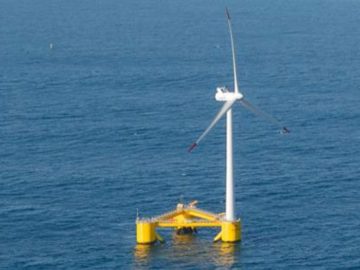 A Seattle startup has proposed what could be the world’s largest floating offshore wind farm on a site 33 miles northwest of Morro Bay, anchoring in place around 60 to 100 turbines capable of delivering as much as one gigawatt of electricity into California’s grid.,,, Morro Bay’s roughly 10,000 residents are also divided over the project, and not just because of worries about eyesores on the shoreline. The local commercial-fishing trade group, representing the town’s second-largest industry after tourism, has expressed concerns about losing its territory. click here to read the story 15:09
A Seattle startup has proposed what could be the world’s largest floating offshore wind farm on a site 33 miles northwest of Morro Bay, anchoring in place around 60 to 100 turbines capable of delivering as much as one gigawatt of electricity into California’s grid.,,, Morro Bay’s roughly 10,000 residents are also divided over the project, and not just because of worries about eyesores on the shoreline. The local commercial-fishing trade group, representing the town’s second-largest industry after tourism, has expressed concerns about losing its territory. click here to read the story 15:09
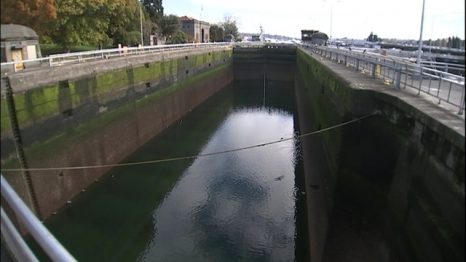
Ballard Locks face millions in upgrades or risk failure
The region’s economy could be at risk, as well as its environment and even highways if one aging chokepoint is not addressed – the Ballard Locks. Needed work on the 100-year-old facility could take between $30-60 million and between 6-10 years to complete. In the meantime, work on items such as the emergency closure system await updates. “If the locks were to fail in an open position, Lake Washington could drain by a pretty dramatic amount and quickly,” said Charles Costanzo with the American Waterways Operators,,, “You have critical infrastructure like the 520 Bridge and the I-90 Bridge; you have a floating bridge that could potentially no longer be floating. That would seriously compromise the integrity of highway infrastructure and be pretty paralyzing to the region.” “If the locks have to close at the opening of a fishing season … it could potentially be a lost season for the fishing industry,” he said. click here to read the story 13:46
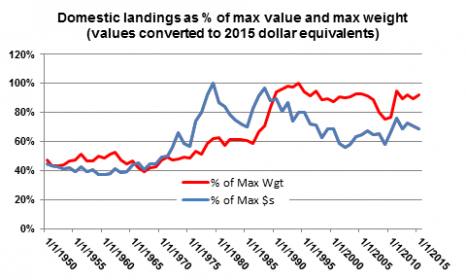
Nils Stolpe, Fishnet USA – So how are we doing? (2017 edition) A Report on our Domestic Commercial Fishing Industry
I occasionally share my impressions of how the domestic commercial fishing industry is doing, using as my primary data source the NMFS online database “Annual Commercial Landing Statistics” (click here). We are fortunate to have these extensive records of commercial landings of fish and shellfish in the United States extending back to 1950 because they allow a fairly comprehensive view of long term industry (and resource) trends. Among the most useful statistics are those dealing with the value and weight of the total landings for each year. Together they give an overview of how the domestic fishing industry is progressing (or regressing) from year to year. Click here to read the report 11:49
Dana Eldridge: Where are the characters?
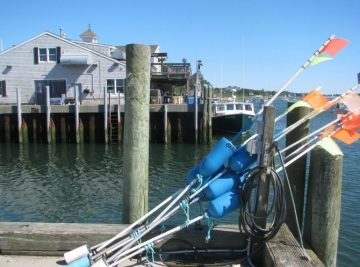 We don’t seem to have as many characters around as I remember as a youngster and that’s too bad. Maybe television has lured them indoors. One example of our long ago character episodes that so enlivened our daily lives follows: During the late 40s and most of the 50s, one of my uncles was a commercial fisherman out of Chatham. His boat, like most of the rest of the fleet, was a Novi, (built in Nova Scotia).,, In those days, fishermen were mostly tub trawlers. A trawl is a long line with hooks every six feet or so. Uncle Bob and his partner Herb would get down to the boat a couple hours before dawn, bait each of the thousands of hooks and set out for one of the fish rich hot spots. After a day of setting the trawl, retrieving the trawl, slatting the fish into the bins, it was time for the hours long slog back to the fish pier. This was the time when the fish got their rudimentary cleaning in preparation for shipment to Boston or New York, where Chatham’s fresh fish always demanded a premium. click here to read the story 09:59
We don’t seem to have as many characters around as I remember as a youngster and that’s too bad. Maybe television has lured them indoors. One example of our long ago character episodes that so enlivened our daily lives follows: During the late 40s and most of the 50s, one of my uncles was a commercial fisherman out of Chatham. His boat, like most of the rest of the fleet, was a Novi, (built in Nova Scotia).,, In those days, fishermen were mostly tub trawlers. A trawl is a long line with hooks every six feet or so. Uncle Bob and his partner Herb would get down to the boat a couple hours before dawn, bait each of the thousands of hooks and set out for one of the fish rich hot spots. After a day of setting the trawl, retrieving the trawl, slatting the fish into the bins, it was time for the hours long slog back to the fish pier. This was the time when the fish got their rudimentary cleaning in preparation for shipment to Boston or New York, where Chatham’s fresh fish always demanded a premium. click here to read the story 09:59
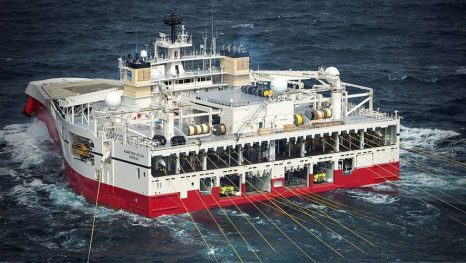
Rutherford, others sign letter opposing Atlantic coast seismic testing for oil exploration
The same day that President Donald Trump touted new energy policies during a speech at the U.S. Department of Energy that he said were part of a “golden era of American energy,” Rep. John Rutherford’s office released a letter signed by him more and than 100 other members of Congress that voiced opposition to the use of a controversial oil and gas exploration technique off the Atlantic Coast. “We are writing in strong opposition to your recent secretarial order to move forward with offshore oil and gas exploration in the Atlantic Ocean,” the letter, signed by members of both parties and addressed to Department of Interior Secretary Ryan Zinke, began. “Offshore oil and gas exploration, the first step of which is seismic air gun testing, puts at risk coastal economies based on fishing, tourism, and recreation,” it said before asking Zinke not to issue any permits for the surveys. click here to read the story 09:10
FISH-NL calls on C-NLOPB to suspend seismic work in light of potential impact on basis of marine food chain
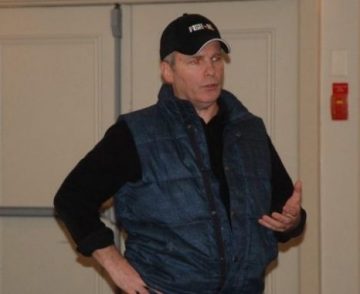 The Federation of Independent Sea Harvesters of Newfoundland and Labrador (FISH-NL) has requested that the Canada-Newfoundland and Labrador Offshore Petroleum Board (C-NLOPB) immediately suspend seismic work off Newfoundland and Labrador in light of a new study that found the intense acoustic signals may damage critical elements of the marine food chain. “With most commercial fish stocks at or near critical levels our first priority must be the health of our renewable marine resources,” says Ryan Cleary, President of FISH-NL, who made the request Thursday in a letter to Scott Tessier, chair and executive officer of the C-NLOPB. “The potential impact of seismic testing on the marine environment — combined with a potential conflict of interest in which the best interests of inshore harvesters may not be represented — should compel the C-NLOPB to act,” Cleary wrote in the letter. click here to read the press release 08:59
The Federation of Independent Sea Harvesters of Newfoundland and Labrador (FISH-NL) has requested that the Canada-Newfoundland and Labrador Offshore Petroleum Board (C-NLOPB) immediately suspend seismic work off Newfoundland and Labrador in light of a new study that found the intense acoustic signals may damage critical elements of the marine food chain. “With most commercial fish stocks at or near critical levels our first priority must be the health of our renewable marine resources,” says Ryan Cleary, President of FISH-NL, who made the request Thursday in a letter to Scott Tessier, chair and executive officer of the C-NLOPB. “The potential impact of seismic testing on the marine environment — combined with a potential conflict of interest in which the best interests of inshore harvesters may not be represented — should compel the C-NLOPB to act,” Cleary wrote in the letter. click here to read the press release 08:59
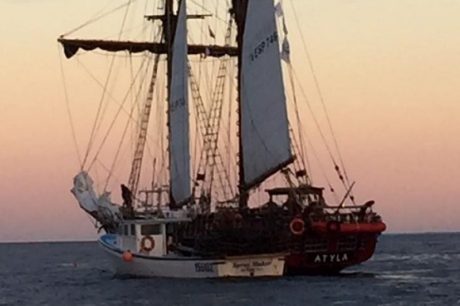
P.E.I. fishermen surprise tall ship crew by giving them lobster
A Spanish tall ship visiting P.E.I. drifted into a seafood surprise off Beach Point when it received some fresh lobster from fisherman Frank MacNeill and his crew. It was just before sunset on Tuesday, June 27, and the fishermen had finished hauling up the lobster traps aboard MacNeill’s boat, Spray Maker, when they realized the tall ship was close by. “She wasn’t far from us at all,” said MacNeill. “I just circled up and I asked them if they’d got lobsters off any of the (other lobster fishermen) and they said no.” There were four or five other lobster boats in the same waters that day, said MacNeill, some of which had already approached the tall ship. “I went back and seen what was in the trays — there was probably 35 or more lobsters — and I said to the boys, ‘we mays as well give ‘em all.’ ” click here to read the story 08:24



































